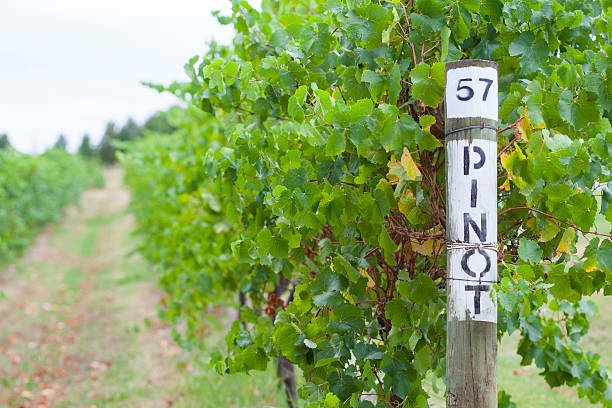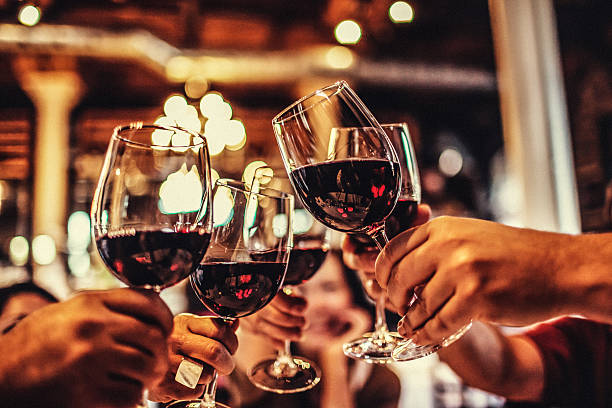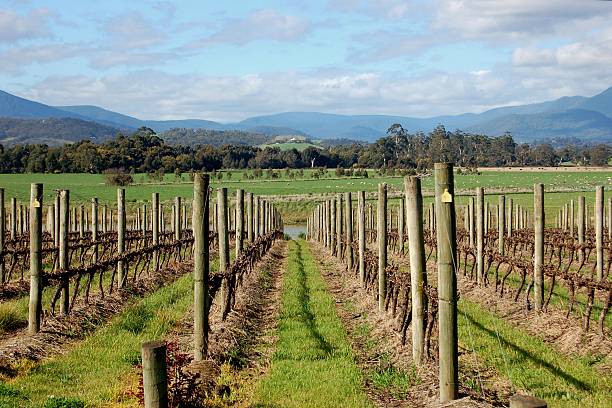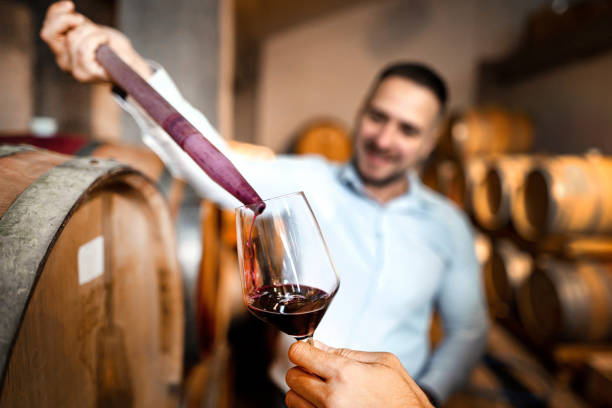The Present
While it is true that the Yarra Valley is primarily known as a place to enjoy sophisticated Chardonnays and pinot noirs that smell of perfume, The Region’s founders got their inspiration from old-fashioned red wines from Bordeaux. The pioneers of the 19th century are the first in three “waves of winegrowing that were inspired by shifts in climate and taste of the consumer. The most recent “wave” has seen Yarra Valley winegrowers refocus on red wines made from Cabernet and Shiraz. To spice things up are the plantings of Mediterranean varieties such as Gamay, Grenache, Barbera, Nebbiolo, and Sangiovese. As the Yarra Valley continues to evolve, What will the next phase bring?
It is located in the northeast of Melbourne. Yarra Valley is among the top wine-growing regions in Australia.
The First Wave
The first vines of the Yarra Valley were planted in 1838 by the Ryrie brothers. In 1850, a Swiss immigrant, Paul de Casella, bought the property that the Ryrie designated Chateau Yering (now Yering Station). The following year, the older brother Hubert founded St. Hubert’s with fellow Swiss Vigneron Frederic Guillaume de Pury, founding Yeringberg, now managed by the 4th generation de Pury family.
De Pury family is a part of the farming tradition and winemaking back to 1863. The practice is still being maintained in the fourth generation. (Photo from www.yeringberg.com.au)
The Grand Prix award at the 1889 World Exhibition in Paris for the Chateau Yering wine spelled out 50 years of work by those who were the first to establish the fledgling wine region. The narrow-minded French judges believed the wine was “too good to be Antipodean and therefore must be an original French wine shipped to the colony, and then returned under a new name’. But it wasn’t. This wine was a Yarra Valley wine and was one of the many award winners of the time.
The first wave waned by the close during the late 19th century because of shifting tastes in the consumer market, new taxes, and the effects of the phylloxera virus. The last vines in Yeringberg were sunk in 1921, and replanting started in 1969.
The Second Wave
In the 60s, boutique wineries began popping up across Australia as new wine lovers emerged. Many of them were doctors who loved France’s traditional wines, particularly Bordeaux. One of the most famous was Dr. John Middleton, who set out to make a wine based on Cabernet, similar to the famous ‘clarets’ from earlier times. Many would agree that Mount Mary Quintet has comfortably reached its objective. It’s 2019 (USD138) is a shining example. Some newcomers, like Yarra Yering, and Seville Estate joined the re-established Yeringberg and St Hubert’s vineyards.
It was in the 1980s that the emphasis of Yarra Valley’s growing wine production changed toward Chardonnay and Pinot Noir – driven by the demand from across the nation for Burgundian grapes. James Halliday left the Hunter Valley to plant the varietal brothers in Coldstream Hills in 1985 with the French-owned sparkling house Chandon founded in the same year.
In 1985, Coldstream Hills was associated with producing wines from the Yarra Valley, renowned for their sophisticated Chardonnay and Pinot Noir. (Photo taken from www.tweglobal.com)From this humble beginning of land, the Yarra Valley has grown to 2500 hectares, with the Burgundian duo dominating – in still-wine production and sparkling champagne style.
The Third Wave
In the early years of the century, Yarra Valley winegrowers began to review their strategies. Market trends led to new styles and grape varieties, amplified because Yarra Valley’s climate significantly warmed in the past 50 years. Other winemakers retreated to the pioneers of the 19th century to shift their focus back towards “claret” varieties and more robust reds.
Because of climate change, Yarra Valley has become warmer in the past five decades. This requires winemakers to focus on red grape varieties with a fuller body. New Sites
The Yarra River flows to the northeast of Melbourne within the Yarra Ranges with increasing power as it flows towards Melbourne along with Port Phillip Bay. The first pioneers established the river’s flats around Yarra Glen – Yering Station, and Yeringberg remained in the area. However, the best estate is located in those more elevated (and more relaxed) areas in the east, near Healesville and south of Woori Yallock. The vineyards were initially planted in the latter half of the 1980s but failed to grow with the successive wet and cold vintages that failed to mature Chardonnay and Pinot Noir to be used as table wines. The low sugar high acid grapes were incorporated into sparkling wines, now a vital component of the Yarra Valley’s wine wheel. These more excellent vineyards have become the central point of table wine production, with Gembrook Hill, Timo Mayer, Mac Forbes, and Hoddles Creek Estate in situ, with numerous of Yarra Valley’s top players sourcing their fruit from vineyards located in The Upper Yarra area.
New Varieties
The shift to higher elevations has seen winemakers in their traditional areas of the valley revisit their pages with Mediterranean varieties such as Grenache, Nebbiolo, Sangiovese, and Gamay, as well as more conventional grapes like Shiraz, Merlot, and Cabernet Sauvignon. There’s more than reds, with Roussanne returning (Swiss vineyard owners planted it in the 19th century) and Rhone fellows Marsanne and sun-loving Viognier.
In addition to the diversity of grape varieties found in Yarra Valley are Mediterranean grape varieties such as Gamay, Grenache, Barbera, Nebbiolo, and Sangiovese.
One particular instance is at TarraWarra, where an inefficient section of Pinot Noir was replanted with new premium Merlot Clones and Shiraz. This year’s TarraWarra Estate Block K Merlot 2018 (USD20) and Block J Shiraz 2018 (USD20) illustrate this re-alignment.




